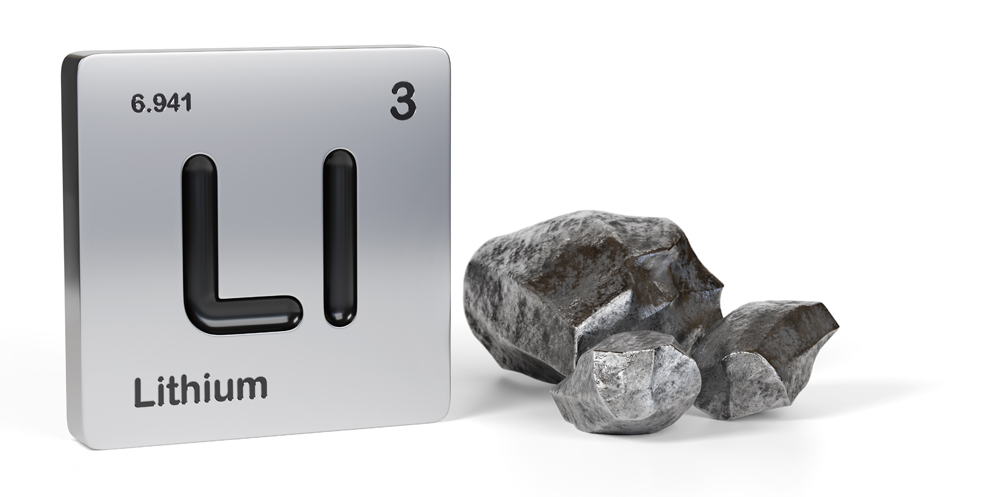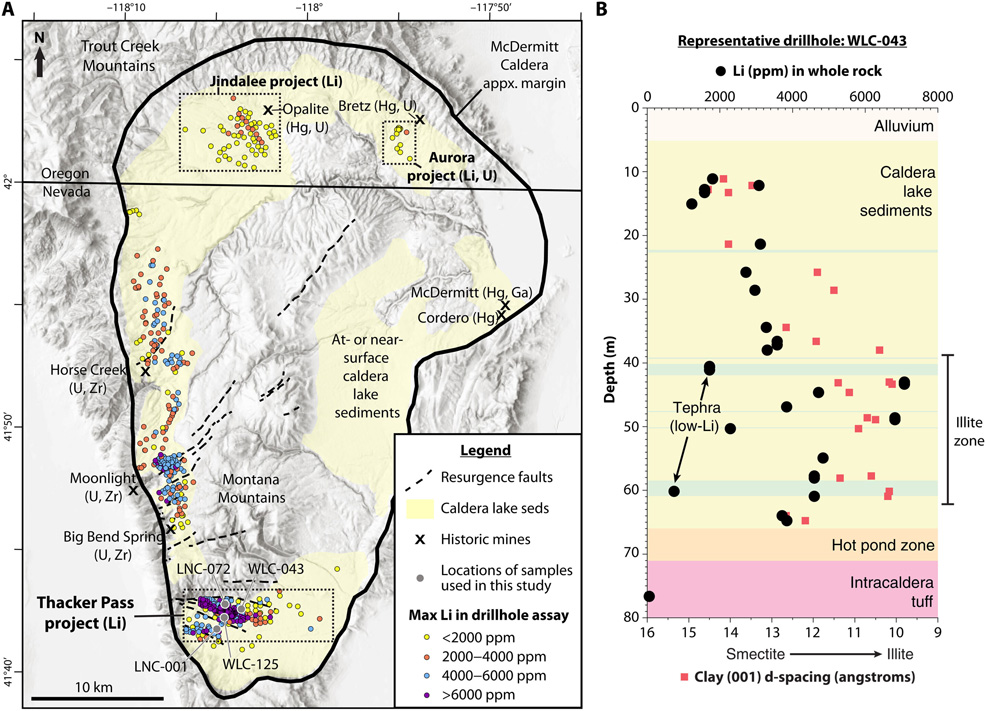
19th September 2023 Lithium deposit in U.S. volcano could be world's largest Geologists report the discovery of what may be the largest known deposit of lithium, located in the crater of a dormant volcano along the Nevada–Oregon border, and estimated to contain up to 40 million tonnes of the metal.
Lithium is a vital element in today's technology-driven world, serving as a key component in rechargeable batteries that power everything from electric vehicles (EVs) to smartphones and laptops. Its high energy density, lightweight nature, and electrochemical potential make it ideal for energy storage. As the global push for sustainable and clean energy intensifies, demand for lithium is projected to triple or even quadruple by 2030 – driven by EV adoption and the expansion of both home and utility-scale battery storage solutions, alongside the proliferation of consumer electronic devices. Exploring, developing, and efficiently managing lithium reserves will therefore be of increasing importance in the years ahead. Much of the world's supply is currently obtained from the "Lithium Triangle" of Bolivia, Argentina, and Chile, as well as from Australia and China. These countries have long served as the epicentres of production, their dominance giving them strong influence over the global supply chain. However, the lithium extraction market could soon be disrupted, thanks to an exciting new discovery in the United States. The crater of a dormant volcano along the Nevada–Oregon border is now thought to contain vast amounts of the metal.
Credit: Science Advances (2023)
Geologists had already known that McDermitt Caldera hosts lithium-bearing volcanic muds. This region, measuring 35 x 45 km (22 x 28 mi), is likely the oldest in a sequence of calderas formed by the Yellowstone hotspot. A lava dome formed there 19 million years ago, which collapsed into a caldera during a major eruption around 2.6 million years later. A lake subsequently formed in the caldera, depositing various materials. In the 20th century, mining of mercury and uranium ores took place at eight sites. More recently, prospectors have begun to realise the potential for lithium. Thacker Pass, a roughly 18,000 acre (7,300 ha) site within McDermitt Caldera, has been the focus of considerable efforts by Lithium Americas Corp to establish mining operations. In 2018, the company published its measured and indicated resources for the project, which amounted to 6 megatonnes (Mt), a figure it later revised upwards to 13.7 Mt, with an average ore grade of 2,231 ppm (0.22%) lithium. The U.S. Bureau of Land Management granted approval for a mine in 2021 and development began in March 2023. New in situ analysis has now produced an even higher estimate. Thacker Pass may contain 20–40 Mt of lithium, according to the latest research. Given this wide range of possible values, there is considerable uncertainty at this stage. But if confirmed with additional drilling studies, even the lower estimate would be a substantial boost for lithium production in the United States. The higher estimate, on the other hand, could make it the largest lithium resource in the world, nearly double the tonnage of Bolivia's Salar de Uyuni, which forms one-third of the "lithium triangle" mentioned earlier. To put these weights in perspective, the estimated mass of the Great Pyramid of Giza is around 6 million tonnes. So, 40 million tonnes of lithium would be roughly equivalent to the weight of 6.5 Great Pyramids. At current market prices, its value might be over $1.5 trillion.
"A very, very significant deposit of lithium"
"If you believe their back-of-the-envelope estimation, this is a very, very significant deposit of lithium," says Anouk Borst, geologist at KU Leuven University, in an interview with Chemistry World. "It could change the dynamics of lithium globally, in terms of price, security of supply and geopolitics. The U.S. would have its own supply of lithium and industries would be less scared about supply shortages." "They seem to have hit the sweet spot, where the clays are preserved close to the surface," she added. "So they won't have to extract as much rock, yet it hasn't been weathered away yet." Thacker Pass has faced legal challenges, however. Indigenous tribes with traditional homelands in the area oppose the project. Environmental groups have also raised concerns about the potential impact on water resources and wildlife. The New York Times reported that, "the fight over the Nevada mine is emblematic of a fundamental tension surfacing around the world: electric cars and renewable energy may not be as green as they appear". Glenn Miller, a retired professor of environmental science at the University of Nevada Reno, told CNN the project is a "relatively benign mine for its size" and said the clean energy benefits of lithium mining would outweigh environmental concerns – especially when it comes to reducing greenhouse gas emissions. "Those who say it isn't going to make any difference, they're simply wrong," said Miller. "Radical environmentalists are going to argue that the only way to solve the climate change problem is to drive a whole lot less and to not burn gasoline or coal. Well, that's not going to happen – the demands of society are set so we're going to have to have an active transportation industry." Miller has previously stated that mining will stay above the groundwater level for the first 20 years, although this could change in later stages. If all goes according to plan, the mine will begin production in 2026, with operations expected to continue for the next 40 years.
Comments »
If you enjoyed this article, please consider sharing it:
|








